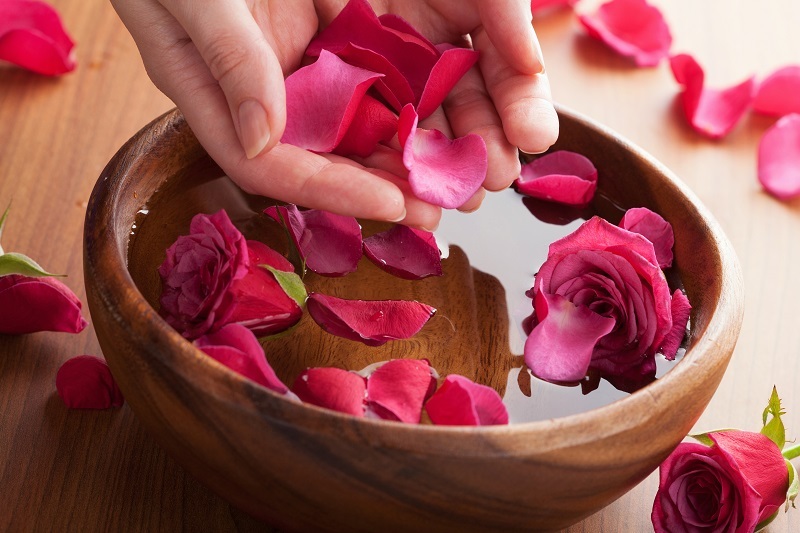Essential Tips for Stunning Hydrangeas
Posted on 23/08/2025
Essential Tips for Stunning Hydrangeas: The Ultimate Guide
Hydrangeas have captured the hearts of many garden enthusiasts for their extravagant blooms and adaptability. From classic mophead varieties to elegant lacecaps and panicles, hydrangeas offer a breathtaking spectacle in gardens and containers. If you're dreaming of idyllic, stunning hydrangea displays, this comprehensive guide will teach you everything you need to know about growing and caring for these beautiful shrubs.

Understanding Your Hydrangeas: Types and Characteristics
Main Hydrangea Varieties
- Hydrangea macrophylla (Bigleaf or Mophead Hydrangeas): Known for their large, round flowers and ability to change color based on soil pH.
- Hydrangea paniculata (Panicled Hydrangeas): Characterized by conical flower heads, hardy and sun-tolerant.
- Hydrangea arborescens (Smooth Hydrangeas): Notably the 'Annabelle' variety, with large, snowball-shaped blooms.
- Hydrangea quercifolia (Oakleaf Hydrangeas): Unique foliage resembling oak leaves, offering vibrant fall color in addition to white blooms.
- Hydrangea serrata: Similar to macrophylla but more compact and cold-hardy, ideal for smaller gardens.
Choosing the right type is crucial for achieving beautiful hydrangeas in your specific climate and location.
Best Planting Practices for Vibrant Hydrangeas
Selecting the Perfect Spot
- Partial sun is ideal for most varieties: morning sun and afternoon shade allow lush growth and prolific blooming.
- Hydrangeas dislike harsh, direct afternoon sunlight which can scorch leaves and reduce bloom longevity.
- Good air circulation helps prevent disease, but avoid spots with strong winds.
Soil Needs for Healthy Growth
- Opt for well-draining, rich soil amended with organic matter.
- Hydrangeas enjoy consistently moist - but not waterlogged - conditions.
- The soil's pH affects bloom color, especially in macrophylla hydrangeas.
How to Plant Hydrangeas Correctly
- Dig a hole twice as wide as the root ball but just as deep.
- Loosen the roots gently before planting.
- Backfill with soil mixed with compost for a nutrient boost.
- Water thoroughly after planting, then mulch to retain moisture.
Starting your hydrangea with the proper foundation will ensure a lifetime of beautiful blooms.
Secrets to Watering and Fertilizing Hydrangeas
The Right Way to Water Hydrangeas
- Consistent moisture is key--deeply water at the base in the morning, avoiding wetting the leaves.
- Check the top two inches of soil: if dry, it's time to water again.
- Newly planted hydrangeas need more frequent watering until established.
- Mulching helps retain soil moisture and keeps roots cool.
Fertilization for Stunning Hydrangea Flowers
- Use a balanced, slow-release fertilizer in early spring as new growth emerges.
- Do not over-fertilize, as this can promote leafy growth at the expense of blooms.
- For blue hydrangea blooms, feed with a fertilizer low in phosphorus and high in potassium.
- Follow with a summer top-up if you notice pale leaves, but avoid late fertilization to reduce frost damage risks.
Unlocking Bloom Color Magic: Soil pH and Hydrangeas
Understanding Soil pH and Flower Color
The color of hydrangea flowers is a fascinating trait, particularly in the Hydrangea macrophylla group. Their colors can shift between shades of blue, pink, or purple depending on the soil's pH and aluminum content.
How to Change Hydrangea Color
- For Blue Blooms: Lower soil pH (more acidic, pH 5.2-5.5) by adding aluminum sulfate or organic mulch like pine needles.
- For Pink Blooms: Raise pH (more alkaline, pH 6.0-6.2) by adding lime to the soil.
- Test soil pH regularly to maintain desired color.
- Note: White hydrangeas do not change color, but some varieties may slightly flush pink or green in aging blooms.
This enchanting color control is one reason gardeners cherish these gorgeous hydrangea plants.
Essential Pruning Techniques for Healthy Hydrangeas
Why and When to Prune Hydrangeas
Pruning is vital in hydrangea care, but methods and timings differ by species:
- Bigleaf and Oakleaf Hydrangeas: Bloom on old wood. Prune after flowering in midsummer; avoid late fall or spring pruning, which removes next year's buds!
- Panicled and Smooth Hydrangeas: Bloom on new wood. Prune in late winter or early spring before active growth starts.
How to Prune Hydrangeas Effectively
- Remove about one-third of the oldest stems at the base annually to encourage new growth.
- Trim crossing, damaged, or dead branches anytime.
- Snip faded blooms to keep shrubs tidy and promote further blossoming.
Proper pruning ensures strong structure, abundant blooms, and a stunning hydrangea display season after season.
The Importance of Mulching and Winter Protection
Smart Mulching for Moisture and Health
- Apply a thick mulch layer (2-3 inches) of organic matter such as chopped leaves, bark, or pine needles.
- Maintain mulch year-round for consistent moisture and temperature, controlling weeds and feeding soil microbes.
Protecting Hydrangeas in Cold Climates
- In autumn, add extra mulch or straw around root zones for insulation.
- For borderline hardy varieties, use burlap wraps or temporary shelters to block wind and cold.
- Delay spring pruning; wait until new buds appear to assess winter damage.
This extra protection ensures the longevity of your beautiful hydrangea plantings, come rain or frost.
Dealing with Common Hydrangea Problems
Pests and Diseases
- Aphids, scale insects, and spider mites can sometimes attack hydrangeas--spray with insecticidal soap or use natural predators when needed.
- Powdery mildew, leaf spot, and root rot are possible--avoid overhead watering, prune for airflow, and plant in well-drained sites.
Vigilance and proper maintenance will keep diseases at bay and promote healthy hydrangea growth.
Why Do Hydrangeas Fail to Bloom?
- Incorrect pruning (removing flower buds).
- Extreme late frosts killing developing buds--protect with covers in spring if needed.
- Too much shade or nitrogen fertilizer encourages leaves over flowers.
- Hydrangeas are young and need time to mature.
Patience and proper care will lead to those coveted, stunning hydrangea flowers.
Design Ideas: Maximizing the Beauty of Hydrangeas
Best Companions for Hydrangeas
- Shade-loving perennials like hostas, ferns, and astilbe complement large hydrangea blooms.
- Spring bulbs (daffodils, tulips) provide early interest before hydrangeas awaken.
- Evergreens such as boxwood offer year-round structure around hydrangea beds.
Landscaping With Hydrangeas
- Use as foundation plantings, mixed borders, or stand-alone specimen shrubs.
- Mix different hydrangea types for a succession of color from early summer to fall.
- Grow in large containers for porches or patios--great for renters or urban gardens.
- Try mass plantings for dramatic, high-impact displays.
Prolonging the Bloom: Maintenance Tips for Gorgeous Hydrangeas
Deadheading and Cleaning
- Snip spent blooms just above a leaf node to encourage more flowering and a tidy look.
- Remove any faded or diseased leaves quickly to avoid pests and rot.
Extending Flower Life Indoors
- Cut hydrangea stems early in the morning for fresh bouquets.
- Immerse stems in cool water and recut underwater for maximum vase life.
- Air-dry blossoms for everlasting arrangements--choose just-mature blooms for best results.

Frequently Asked Questions About Hydrangea Care
Can Hydrangeas Grow in Full Sun?
Some, like Hydrangea paniculata, can tolerate full sun in cooler climates--provided they get ample moisture. Most varieties prefer dappled sunlight, especially in hotter regions.
How Long Do Hydrangeas Bloom?
Hydrangea blooming periods vary, generally lasting from late spring through summer. Panicle and some reblooming varieties can flower well into autumn, rewarding you with continuous magnificent hydrangea blossoms.
Can I Grow Hydrangeas Indoors?
Hydrangeas can thrive indoors temporarily as gift plants, but require lots of light and eventually outgrow pots, making them best suited for outdoor gardens.
Conclusion: Cultivating Stunning Hydrangeas Year After Year
Hydrangeas are more than just pretty faces--they bring structure, color, and seasonal excitement to any landscape. By choosing the right hydrangea types, planting them thoughtfully, mastering watering and feeding, and following proper pruning and protection, you'll enjoy spectacular hydrangea blooms every year.
Stay attentive to your plants' needs and experiment with different varieties and companions to discover the full potential of these beloved shrubs. These essential hydrangea tips will transform your garden into a show-stopping retreat you and your neighbors will admire for years to come!
Latest Posts
Essential Tips for Stunning Hydrangeas
The Romantic Gesture of Giving Red Roses on Valentine's
Blooming Romance: Valentine's Top 5 Flower Gifts





